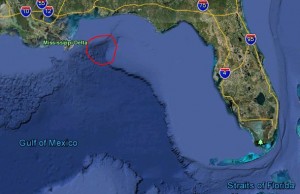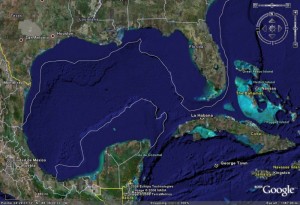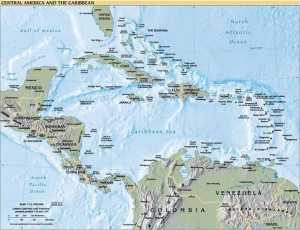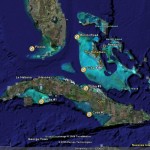Last time I discussed the possible location of MegaAmerica’s ancient coastlines and why a study of this region might lead to the discovery of tangible artifacts of the maritime cultures that once inhabited the area. This time I’d like raise the level of the discussion – literally – and focus on some of the area’s highest points.
The smaller islands of the Caribbean are the tips of submerged mountains that just barely rise above the surface. The highest point in the Cayman Islands, for example, is The Bluff on Cayman Brac and it is only 141 feet (43 m) above sea level. In the Bahamas, the highest point is 206 feet (63 m) and in Bermuda it’s 249 feet (76 m).
At the other end of the spectrum we find Hispaniola’s Pico Duarte at 10,164 feet (3,098 m), Jamaica’s Blue Mountain at 7,402 feet (2,256 m) and Cuba’s Pico Turquino (Turkish Peak) at 6,578 feet (2,005 m). An interesting side-note is that the highest point in Cuba is located on the edge of the Cayman Trough (aka Cayman Trench) – the deepest portion of the Caribbean – which drops to a staggering 25,216 feet (7,686 m) below sea level!
Like the ancient coastlines, these few high points in the Caribbean seem to be natural places to search for the remnants of an ancient civilization. It’s possible the mountain tops might have served as religious or ceremonial sites or, at the very least, as lookout posts. If the ancient mariners were as adept at astronomy as the Maya, these mountain peaks would have provided an excellent view of the heavens.
The 3 to 4 hour trek to the summit of Jamaica’s Blue Mountain is a popular tourist attraction and the numerous trails in the area probably imply that there aren’t any yet-to-be-discovered megalithic ruins on the island. The same is true, to a lesser degree, of Hispaniola’s Pico Duarte. Pico Turquino, in Cuba Sierra Maestra mountain range, is climbable but the terrain is rugged and this mountain range successfully hid Fidel Castro and his followers during the Cuban Revolution of the 1950s. I can’t help wondering if it’s also hiding clues to the ancient cultures of MegaAmerica. It’s easy to believe that all the “good stuff” has already been discovered on that part of the Earth that isn’t submerged, but dozens of new sites are discovered every year in the jungles of the Yucatan, so why not in Cuba? Perhaps Dr. Iturralde (see his profile in an earlier blog entry) or someone else with access to the area around Pico Turquino would be kind enough to fill us in by posting an entry in the forum on this site.
If you’re a fan of Google Earth, NASA’s World Wind or other mapping systems, the coordinates of Pico Turquino’s summit are 19°59′N, 76°55′W.
Please feel free to post any relevant data on this site or email it to rja (at) TheMegaBlog.com. Your input will be greatly appreciated and acknowledged!





